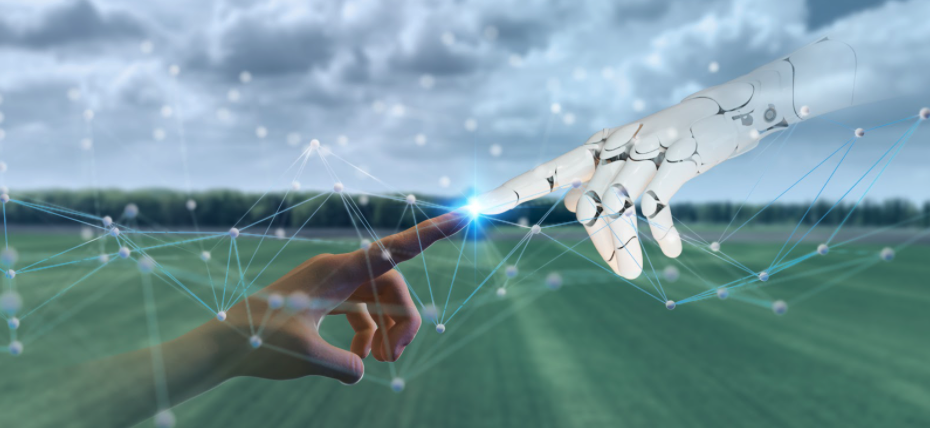
AI and Robots Are Improving Agriculture in 2021
The integration of machine learning, AI, and IoT devices is nothing new to the modern farm.
Different sensors provide agronomists with valuable, reliable, and relevant data to help them increase their farms’ efficiency by ensuring higher yields and cutting production costs.
This is especially of aid at big farms where it’s necessary to monitor and manage dozens of processes at the same time.
With the power of AI, farmers can track weather changes, precipitation, pests infestations, and more to ensure precise water, fertilizers, and pesticides application based on accurate data.
All of this information and its analysis is what ensures the overall modern farm success. That is why more and more growers come to exploring AI opportunities to increase profits via improving crop yields and quality.
One of the biggest applications of AI technology in agriculture has to do with its opportunities in the analysis of satellite imagery for farmlands monitoring (vegetation health, weather patterns, moisture levels analysis, etc).
That is possible thanks to the application of specific algorithms to satellite-retrieved pictures to extract only the necessary and valuable data for farmers. Now, some companies even aim at possessing their own satellites for this purpose.
For instance, EOS Data Analytics plans to launch 7 optical satellites into Earth orbit by 2024 with the particular goal of taking agricultural lands monitoring to a new level.
The satellites will feature a unique set of band channels for the most complex and precise agricultural parameters capture.
In this piece, we will cover different opportunities AI technology already offers for improving agricultural practices, making modern farms and the whole industry more efficient.
Yield Forecasting
AI allows for accurate crop yield prediction thanks to ground sensors data collection and analysis and visual analytics of data from drones and satellites.
Smart sensors and drones gather huge volumes of data in real-time, providing farmers with all the necessary information on what currently happens in their fields.
For easy access and analysis of this data pool in one place, growers can choose an agro app from a variety of those on the market.
Different ground sensors can collect data on soil temperature and moisture, nutrients and fertilizer content, and more to help farmers see how their crop is developing throughout the season.
AI provides the possibility to analyze information for several years, presenting agronomists with crop development patterns, which can be used to predict yield and to make an impact timely if needed.
Maintaining the “Crop Recipe”
“Crop recipe” is a set of conditions under which the crop develops best. These conditions depend on farm location, chemicals used for soil and plants treatment, and harvest time.
And AI-powered tools allow for finding out the best “crop recipe” for a particular crop to flourish.
It is possible thanks to the analysis of historical data collected on a variety of crop growth cycles, searching for the “recipe” under which the crop performed at the highest rate.
Agricultural Robots
The main goal of agricultural robots is the automation of field activities, meaning saving farmers time on dull, regular tasks so that they could focus on more important work.
There is a variety of such robots for different purposes, including seeding, harvesting, weed control, tilling, chemicals application, and more.
Besides, the use of software and hardware complexes for replacing drivers of agricultural vehicles can ensure the reduction of waste and higher yields due to more precise land cultivation.
Ultimately, the world of agriculture slowly moves to automated farming based on the widespread use of mobile and stationary robots.
This is expected to lead to productivity gains coupled with improved margins, resulting in lower production costs.
Here are the prominent tasks of robotization in agriculture:
- Monitoring and forecasting
- Production costs reduction
- Activities precision and quality improvement
- Minimization of food production impact on the environment
- Support of medium and small agricultural businesses
- Increased food safety
- Ability to use agricultural robots in any weather, any time of the day
Many AI projects for agriculture are still in the early stages of development, and some are too good to be true. However, the need for such technologies is very high and keeps growing.
AI-powered tools and devices have already proved to improve farming and seem to continue to do so in the future.
One thought on “AI and Robots Are Improving Agriculture in 2021”
Leave a Reply
You must be logged in to post a comment.



The agricultural industry has not always been enthusiastic about the implementation of advances in technology and technology, and this traditional way of thinking is beginning to change.
I am very impressed with the mission of the company https://slopehelper.com/ “No more hands in agriculture”. I really think this is where agriculture should aim